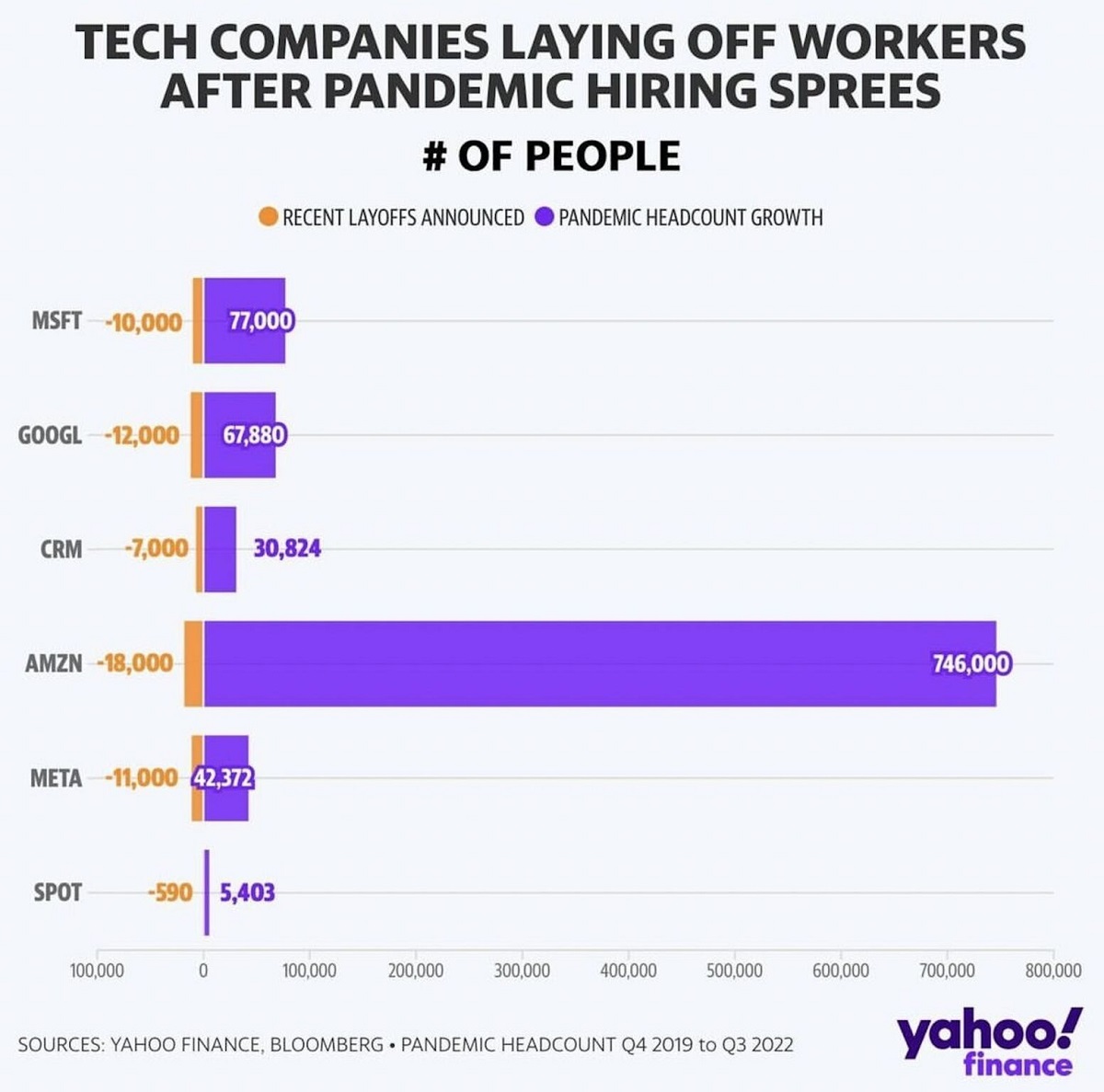Beware: turnover of staff
Are you also looking for new employees? Barkeepers, nursing staff, hairdressers, craftsmen, pizza chefs, vendors, software developers – support is needed everywhere. Job portals are bursting at the seams. Who looks today for example on Stepstone for “.Net development in Berlin”, finds 4.605 offers. For a long time now, companies have not only been competing for customers; workers have become similarly competitive in the meantime. For organisations, this means that those employees who are already on board are becoming increasingly important. Attrition becomes a danger.
What are the reasons for employee turnover?
Why do employees resign? The reasons that lead to fluctuation vary, of course. Often – and you may even know this from your professional or personal environment – the superiors are to blame.
- Expectations are too high or attention and trust are too low.
- Strategic guidelines are lacking, decisions are delayed, taken arbitrarily or even incorrectly and communicated inadequately.
- The appreciation is missing. And also the salary is – perhaps in comparison with colleagues – too low.
- Commitments and promises are not kept.
- The workload is too high and the work-life balance is not right.
- Employees are slowed down, skills and interests are not promoted.
In addition, there are of course numerous reasons that can lead to fluctuation that have other causes:
- The working conditions (premises, technical equipment, working time models, openness for office animals, etc.) do not correspond to the employees’ ideas.
- The distance between work and home is too great due to changed life realities.
- Cooperation with colleagues is difficult.
- The personal future is unclear or there are no opportunities for advancement.
- The identification with the employer is low and the monotony at work is high.
- The economic forecast of the company is difficult, the products and services are not good enough and sales stagnate or fall. The corporate image suffers.
- …
What does the loss of an employee cost?
I read that the loss of an employee whose position is to be filled again after his or her dismissal costs up to 150 percent of his or her annual salary.¹ Unfortunately, I cannot answer the question of how this figure is arrived at. And regardless of that, I wouldn’t even know how to calculate the loss and the resulting costs. Perhaps
- based on the employee’s billed work?
- based on the employee’s salary and social security contributions?
- by looking at possible recruitment costs, at which
effort to define or update the job description,
viewing job portals,
the selection of corresponding candidates,
which include writing letters, invitations, meetings, travel expenses, possible 2nd and 3rd rounds with colleagues, as well as drafting and negotiating contracts? Maybe three, four or even eight rounds are necessary, because the first, second or seventh round does not work. - training costs and a lower performance at the beginning of the new cooperation with higher coordination needs also have to be considered?
And what about job advertisements, job fairs or cooperation with headhunters? There are so many factors that I simply cannot summarise in one formula.
The loss of employees, however, should not only entail a monetary consideration. Every employee has an individual value. For their direct environment, their team and their organisation, they are valuable in the truest sense of the word. They act as mentors or as reverse mentors, they are mood canons, they act as critical spirits or simply tackle as “doers”. They keep each other’s backs clear, they are contact persons and role models. Some are also a kind of glue that hold everything together and lead colleagues, even though they do not actually have a leadership role. Such a loss cannot simply be compensated – at least in the medium term – even if one or the other manager likes to claim otherwise in such situations.
What do employees want? Or what do they not want?
Do you know the skills of your employees? And what about the skills of your colleagues? There are always discussions about the importance of skills: Is technical knowledge more important than social skills? It is argued that the best professional skills are worth little without social skills. And it is said that technical knowledge can be learned in contrast to social behaviour.
In software development, it’s perfectly normal for developers to sit at the workplace with headphones on and isolate themselves from the outside world – and thus from every colleague who simply walks into an open-plan office with a question. In purchasing, sales or support, such behavior would be rather unusual. According to a survey by Stackoverflow, 81% of the developers surveyed worldwide say that they see programming not only as a profession but also as a hobby. Have you ever heard that from a sales representative or buyer? The identification with the actual task could thus be more pronounced, for example, in developers – despite possible social peculiarities – than in other occupational groups. Apart from that, no relationship can be established between the quality of a development and the use of headphones – and the associated, possibly antisocial isolation.
In my own professional past, I was allowed to fill various positions with new employees and, interestingly enough, I never thought about hiring a professionally well-trained, experienced psychopath or a sympathetic good-for-nothing. In real life it is usually a question of professional and interpersonal skills. (To avoid misunderstandings: in this example I would choose the well-trained, experienced and likeable candidate; all other combinations are unattractive.)
If you don’t know the skills – professional and social – how do you interact with colleagues? How do you communicate with them? How do you know what is important to them, what they want or – and this can be something else – what they do not want?
Example: For some employees, a culture of error in the company is important. They deal with the topic and wish to deal with mistakes in a certain way, to look at them and to evaluate them. For other employees, on the other hand, an error culture is not important. But although they don’t actively deal with the topic, they don’t want to be directly confronted with every mistake, they don’t want to have to justify themselves down to the last detail and they don’t want to have to fear any consequences. Nobody wants that. Such behaviour must lead to a bad mood – on the part of the employee concerned and very probably also on the part of the employee’s colleagues.
The Gallup Engagement Index, which annually assesses the quality of jobs in German companies, assumes that 14 percent of all employees have resigned internally. In many cases, a lack of leadership and corporate culture leads to internal dismissal. Gallup puts the costs for the German economy at 77 to 103 billion euros – regardless of how this is calculated. Even if the range of 26 billion euros indicates a certain variance in the results, the damage is immense. Probably there is also no universal answer to what is worse: an employee who has internally resigned, or an employee who has actually already completed the separation? Perhaps the internally dismissed employee can be “reactivated positively” again, but at what cost? Is it even cheaper to lose an employee than to stay?
Quantitative and qualitative turnover of staff
There is a measure for determining turnover of statt: the attrition rate. It is usually calculated as the ratio of leavers to average headcount * 100. Obviously, this is a quantitative approach.
Basically there are three types of turnover of staff:
- Institutional turnover. Example: in primary school, normally 100% of pupils move to intermediate level after grade 4, in international companies expatriates change their location after 2 or 3 years.
- The natural turnover. Example: Employees retire or depart due to death.
- Individual turnover. Example: All employees who leave a company voluntarily or are dismissed.
Institutional turnover of staff and the number of employees leaving the company due to age are easy to determine. Individual turnover creates difficulties. And on closer inspection not only in terms of quantity, but also in terms of quality.
Anyone who has ever worked in a company in which the “good” employees have gradually left the company and the less good ones have remained on board knows that a loss of quality has a particularly lasting effect. This loss is potentiated in a corporate environment in which finding new employees becomes a competition. If then employees who have left the company no longer report so favourably from their former employer in their private and/or professional environment and the company’s image suffers step by step as a result, recruitment becomes even more difficult. Some companies respond to such situations with short-term employee retention programs. At best, however, these secure the status quo, but usually do not help to find adequate, qualified employees. Fluctuation is rampant and, in the worst case, qualitative turnover can turn into quantitative attrition.
Objection: Why are numerous global players laying off so many employees?
If individual turnover is a threat to companies, why have so many global players laid off so many employees in recent months? For example, Microsoft laid off 10,000 people, Google cut 12,000 and Amazon 18,000. Concerns about an imminent collapse of the technology industry are doing the rounds.
It may help to assess these mass layoffs from a distance by taking a small step back and looking at the number of hirings many corporations have made since the pandemic began. Such a look can be found in the following chart:²
Among other things, the chart shows that Amazon hired about 746,000 people from the fourth quarter of 2019 to the third quarter of 2022. Microsoft grew by 77,000 and Google by 67,880 people during this period. So presumably we are not seeing the beginning of the end for global players in the tech industry, but “merely” the result of insufficient planning! This may be expensive and time-consuming, but if you then know that Google receives more than 3 million applications per year³, then apparently some giants can afford such a procedure.
Conclusion
They significantly determine the success of companies. While until a few years ago turnover was rather a niche topic for HR departments that caused companies little headaches, today the consequences can be far-reaching. For many companies, it is often no longer a matter of corporate growth, but of preserving the company’s existence and securing its livelihood. This development, at the latest, should ensure that companies pay attention not only to their customers but also to their employees. And it is not a question of “either or”, but “both”.
Notes:
If you like the post or want to discuss it, feel free to share it with your network.
[1] Findings from the National Business Research Institute, Texas, USA: https://www.nbrii.com/
[2] Yahoo Finance Bloomberg: Tech Companies Laying Off Workers After Pandemic Hiring Sprees
[3] Google received 3.3 million job applications in 2019
Michael Schenkel has published more articles in the t2informatik Blog, for example

Michael Schenkel
Head of Marketing, t2informatik GmbH
Michael Schenkel has a heart for marketing - so it is fitting that he is responsible for marketing at t2informatik. He likes to blog, likes a change of perspective and tries to offer useful information - e.g. here in the blog - at a time when there is a lot of talk about people's decreasing attention span. If you feel like it, arrange to meet him for a coffee and a piece of cake; he will certainly look forward to it!



